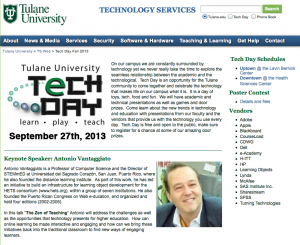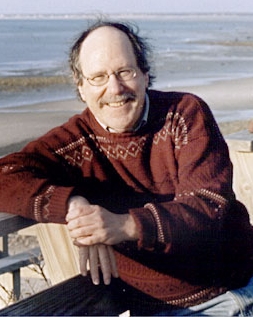It is a shame I let quite a few months go by since October 2013 when I held an amazing Zen of Teaching interview with edtech gurus Jim Groom and Alan Levine. So, I am humbly trying now to regain the time past and take out of the drawer some potent stuff. Sorry for the delay to Jim and Alan, two of the most ethical and knowledgeable people in the trade, and friends to me. Jim is director of the Division of Teaching and Learning Technologies, the famed DTLT, at Mary Washington University, while Alan is an independent instructional technology specialist and programmer who collaborates often with DTLT. Among other achievements, Jim and Alan are known for DS106, an open, online digital storytelling course which has seen great success in the past few years, even spawning a namesake online radio station. As in the previous interviews within this series and the Zen of Teaching Project, the awesome Gabriela Rivera Torrado has assisted me diligently and she wrote the following summary of the interview. This time, the video has been recorded by our STEMmED Edtech specialist Bernabé Soto. It was a huge pleasure for me, I hope all enjoy it!
Keeping with the recurring theme of exploring the possible myths about teaching, the Web and higher education, Jim and Alan were questioned on their views about the alleged current crisis in education. Groom expresses that the ongoing narrative of crisis in higher ed is due to a lack of narrative, per se. When faced with new advances in technology (some of which promise free, easily accessible information for the masses and a possible lower cost for education) universities have failed, for the most part, in creating a narrative that explains why anyone should study and pay for a college education. To make matters worse, in a sense, we are being told we are failing and so we believe it.
Groom resists this narrative of crisis, explaining that he believes that there are “a lot of good people doing a lot of good things” out there. We need to reframe the narrative, taking ownership of it, instead of continuing the relinquishing of our power to shape that narrative- to companies in the tech. industry who are only interested in economic matters of profit. Alan believes that the entire educational system is so complex, that it would be inaccurate to simply state that “it’s in crisis”. What does come to mind with the mention of crisis is the issue of the cost of higher education. The rising costs of college education create a crisis of opportunity for a large sector of the population, with student loan debt on the rise and financial aid occasionally ending up in undeserving hands. Despite all this, Levine and Groom are optimists at heart, who even state that the so called crisis has its benefits, as it exposes the issues, shining a spotlight on problems like aforementioned costs. We need to rethink education! In order to do so, we must take certain measures, such as looking into asking the general public how they feel about innovations such as online education. Tools such as online surveys can be useful in asking for a general opinion.
When asked if they feel that the web is closing up (due to, for example, company and government regulations) the pair continue their optimistic, positive streak, stating that even though the Web may have become more commercial recently, there is also more and more user content every day, the Internet is an infinite space of possibility!
Sometimes we question whether the magnitude of what the Internet is and can be is lost, or will be lost on future generations. Perhaps some have grown up having the Internet around all of their lives and just “assume the Web”. Even so, as Levine states, people of every age can and do find appreciation for the possibilities the Web holds. For Groom, the web constantly defines and redefines itself, with rich history occurring in epochs, such as, for example Wikipedia, YouTube and Napster. Remember Napster? It’s impossible for future generations to be completely oblivious of the strides in innovation and the wonder of all the Web can and has offered. It becomes part of the history and in a way culture of the individual and the collective. These advances change and shape the way that we live and enjoy our lives. Both men remind us in so many words that he next generation will always be blowing the previous’ mind, we have no idea what kind of awesome stuff people will come up with in the future.
Once we’re on the topic of awesome stuff, I’d like to mention DS 106 or Digital Storytelling (also affectionately known as ds106) -an open, online course that happens at various times throughout the year at the University of Mary Washington (but can be taken at any time during the year online). Groom and Levine both teach and work on the blog and radio station dedicated to the project. The four year old venture attempts to redefine the higher ed narrative as one that utilizes online tools like the DS106 course in order to create hubs of decentralized education which contribute the knowledge necessary to empower students and make them agents of their own change. With DS 106 Groom and Levine attempt to break out from what you know about teaching and learning and breaking into what we don’t, experimenting and innovating until we find the right way.
“Show students how to use the web, show students how to interrogate it, show them how to own it, let them take control of it (…)” says Groom. Alan Levine adds that “education is not a funneling track for people to get a job”. Learning communities such as these have the power to create powerful and meaningful relationships that enrich the lives of many people and may help universities make the Web a better place to learn, thanks to their presence.





















